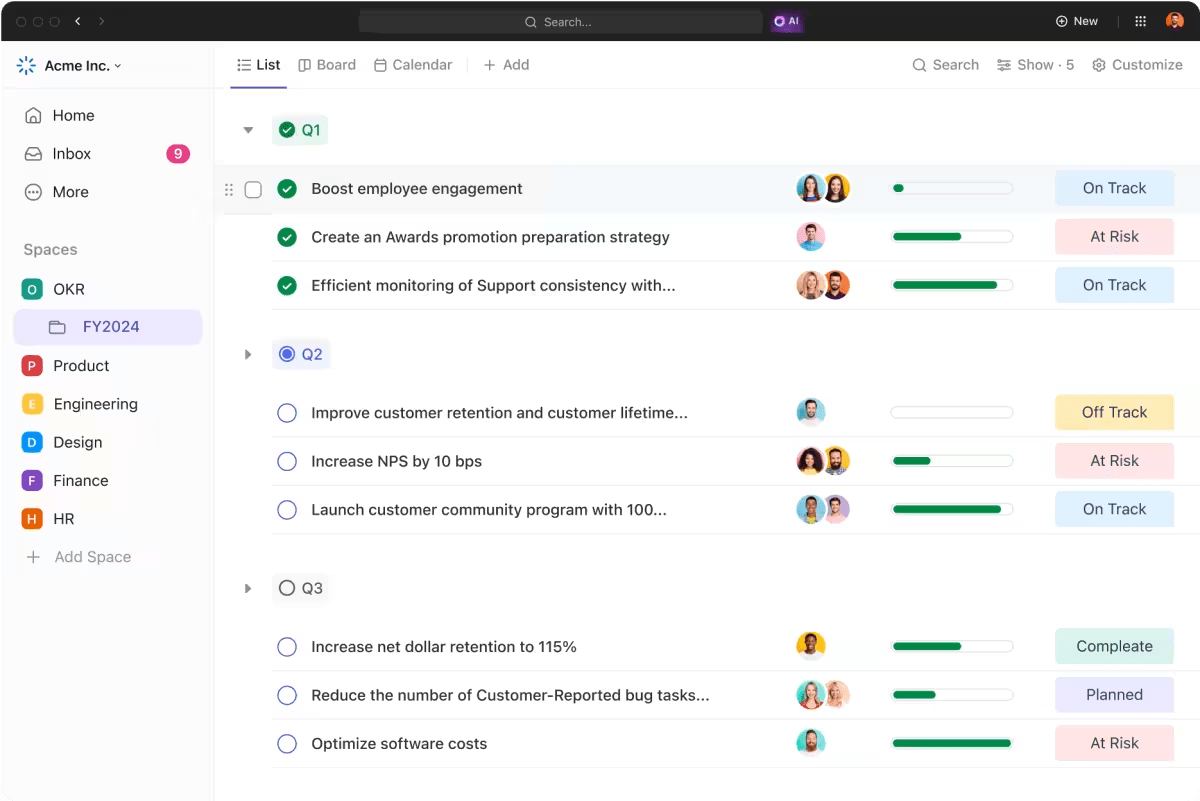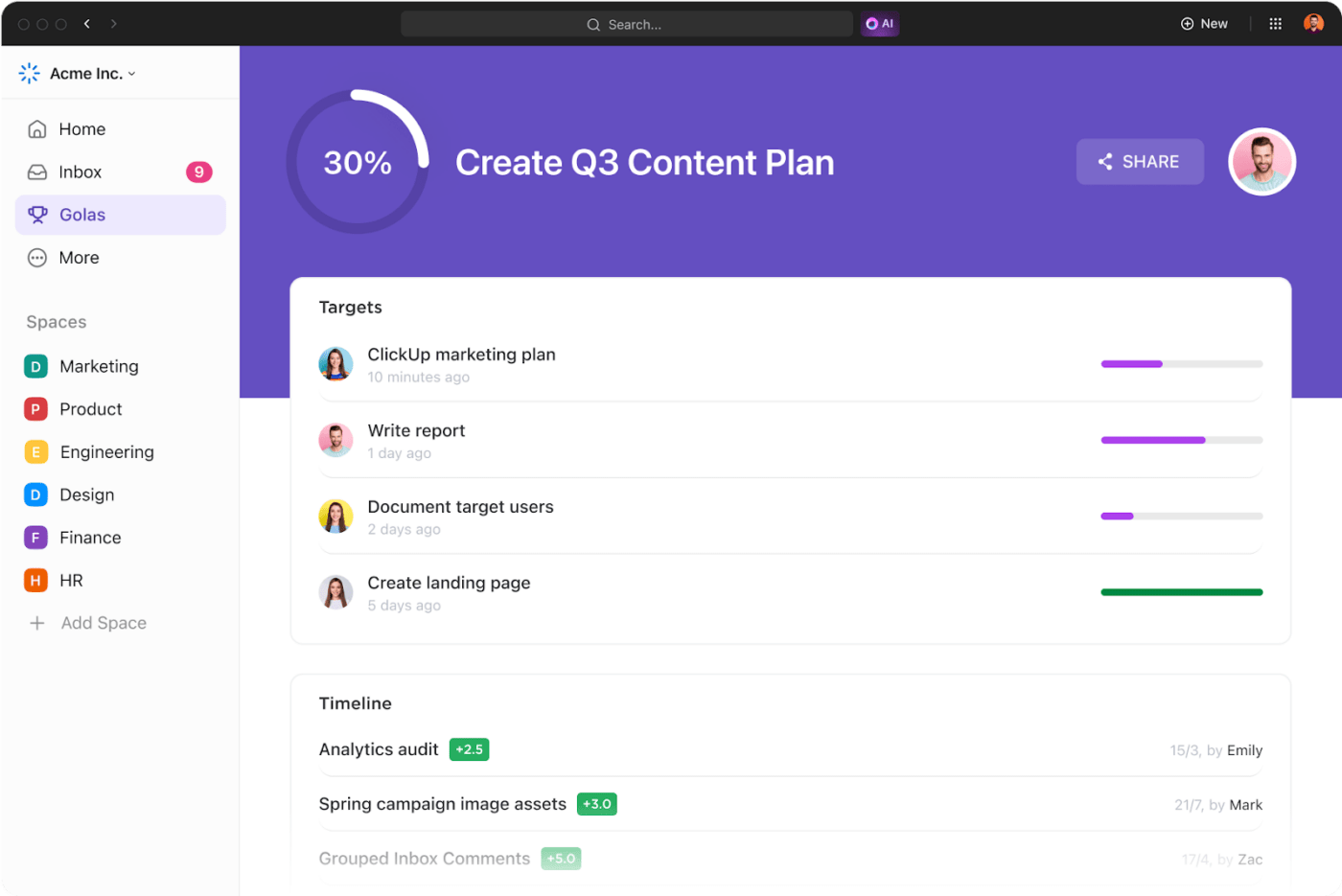How to Get Leadership Experience Within and Outside Work

Sorry, there were no results found for “”
Sorry, there were no results found for “”
Sorry, there were no results found for “”
In the corporate world, your ability to lead—to step up and take on responsibility, even before you’re asked—will set you apart. The right qualification or the latest certification can show your manager you’re good at managing work. But it’s your leadership experience that shows them you’re good at managing people.
While some ‘natural leaders’ have prior leadership experience from high school or university, most of us can use a little help. No wonder the global corporate leadership training market was valued at $33.9 billion in 2023.
So, if you want to brush up on your leadership skills, this blog post is for you. We cover everything from how to approach leadership to the different ways to develop it both at work and outside of it.
Let’s start with the first question—what exactly is leadership?
Leaders grasp nettles.
A leader is someone who can inspire others to come together and achieve great things.
This means guiding a team, keeping morale high, and working towards shared goals in the workplace.
Good leaders prioritize organizational goals and employee well-being to create a more engaged, productive, and sustainable work environment.
Here’s how this works:
But how do you actually do this? By figuring out the type of leader you are and the type of leader you want to be.
Here are some common leadership styles that you can explore:
You give all your teammates a voice, prioritizing open communication and trust. The best thing about this style is that everyone gets a say—creating a safe space. Sundar Pichai, CEO of Google, is known for his democratic leadership, encouraging input from all levels of the organization and creating a culture of innovation and inclusivity.
When it works: In creative environments where your team has a high level of expertise, everyone’s buy-in is important.
Warren Buffett, CEO of Berkshire Hathaway, adopts a laissez-faire approach. He empowers his managers to run their companies with minimal oversight and trusts their expertise.
This leader provides little guidance or direction to their team, empowering them to make decisions. You’re there for them, but don’t breathe down their neck, giving them autonomy and ownership. It’s a great leadership style for middle managers, both for team management and excelling in their own projects.
When it works: You have highly skilled and motivated teams that require minimal oversight.
This works well for leaders at the top of the organizational hierarchy, where you’re more concerned about strategic goals than day-to-day responsibilities. You’re essentially a leader managing a group of leaders. Jeff Bezos at Amazon exemplifies strategic leadership by focusing on long-term goals like global expansion and innovation and guiding senior leadership teams.
When it works: In stable organizations with hierarchical structures and clear work responsibilities.
Here, your main focus is building your team’s skills and pushing them to succeed. It’s equal parts mentorship and leadership—where you must guide your team without micromanaging them. Eric Schmidt, former CEO of Google, is known for his coaching leadership, providing mentorship and support while letting his team take ownership of their tasks.
When it works: If you’re leading less experienced teams or in a rapidly changing environment that demands direct supervision.
This is where you set the ‘pace’—you maintain high standards for yourself and expect the same from your team. The result? You lead by example and build a high-performing team with a strong work ethic. Elon Musk, CEO of Tesla and SpaceX, is a pacesetting leader. He maintains high expectations and pushes his teams to achieve ambitious goals quickly and efficiently.
When it works: In results-oriented teams, where outcomes, speed, and efficiency are prioritized.
Management is doing things right; leadership is doing the right things.
💡The truth is, you can’t always be one type of leader. You might start as a coaching leader and grow into a strategic leader. Or you might have to take a laissez-faire approach with one team and a pacesetting approach with another.
The best way to approach leadership is not to define yourself as a type of leader but rather become the type of leader a situation warrants or your team and organization need.
Leadership experience is the single most important factor for professional growth, opening doors to higher-level positions and promotions.
But beyond transactional benefits, deploying effective leadership strategies can help you build better relationships and improve team performance. Most people don’t quit bad companies; they quit bad leaders. This means it’s leaders who safeguard a company’s culture.
How many stories have you heard of companies that initially had a positive work culture but deteriorated over time? Or of two employees from different teams having vastly different experiences in the same company, often influenced by their relationships with their managers?
Being a good leader can help you build stronger, more meaningful relationships with those around you.
A leader’s job is not to do the work for others, it’s to help others figure out how to do it themselves, to get things done, and to succeed beyond what they thought possible.
While gaining leadership experience can be a rewarding journey, it also comes with its own challenges. Studies report that while 83% of businesses recognize the importance of developing leaders at all levels, only 5% can achieve it successfully.
Here are some common obstacles you may encounter:
Not just that, leadership experience also depends on external factors beyond your control. For example, internally promoted leaders find it easier to excel than external hires as the former already knows the company culture and has people rooting for them to succeed.
Similarly, bias, stereotypes, and the glass ceiling can all make it challenging for women to gain leadership experience.
Then, there are organizational or systemic challenges—some companies may not prioritize on-the-job training or structured leadership programs. This puts the onus on individuals to develop their skills independently, which can be difficult given their busy schedules and other responsibilities.
Also Read: A Proactive Approach to Change Leadership
The most effective way to develop leadership skills is often within your workplace, where you can lead real teams and face real challenges.
But getting this experience at work takes effort and planning—you need to find your opportunities, whether through training or participation in the right initiatives and projects.
Here are some ways you can polish your leadership skills at work:
Mentoring and coaching team members can be a great way to develop your leadership skills. Consider this a soft launch—before you take up an ‘official’ leadership position at work
Besides, by guiding others, you help them grow and create a positive impression that you’ll be a trustworthy leader when the time comes.
There’s always more work—organizing team meetings and retreats, picking up tasks no one else has time for, liaising with cross-functional teams, or even documenting internal processes.
Lead projects you like and those that highlight your interpersonal and organizational skills and use them to prove to the higher-ups that you’re ready for more responsibilities.
Identify potential mentors within your organization who have demonstrated good leadership skills. Connect with them, seek their advice, and observe how they handle various leadership situations.
One idea is to shadow them on certain projects so you can learn from their experiences—it’s a great way to develop situational awareness and improve your on-the-ground leadership skills.
💡Pro Tip: Seek mentorship from multiple leaders for a broader understanding of leadership. This can provide diverse perspectives and insights into effective leadership practices.
Whether you’re super-organized or someone who thrives best in dynamic (or chaotic) environments, a project management software like ClickUp can be a huge support.
Here’s how ClickUp can help you get leadership experience at work:
Kickstart your leadership journey by creating a dedicated project in ClickUp Projects. Use subtasks, deadlines, task descriptions, and custom tags to organize your thoughts and stay on top of your leadership development plan. For example, you can create tags to categorize which skill you want to develop.

You can also create tasks for your leadership responsibilities—like the days you mentor a team member or when you have to organize the next team meeting. That way, you can stay on top of everything.
The best way to brainstorm on leadership-building activities is by using ClickUp Mind Maps.
Start by creating a ‘brain dump’ list where you add all your thoughts and ideas on how you can build your leadership skills in the future—like supporting your team lead in preparing the slide deck for the annual meeting or asking HR if you can sit in on the employee interview sessions.
Then use ClickUp Mind Maps to:
Once you’ve added your plan to a project, the next step is measuring your progress with ClickUp Goals.

Here are some ideas on setting professional goals:
If you aren’t a ‘leader’ at work and are just starting your leadership journey, you must show your manager that you’re ready to lead new initiatives. One way to do that is to grow (and show) your communication skills.
Here’s where visual collaboration tools like ClickUp Whiteboard come in. Say you want to take up a new initiative. Create a presentation on ClickUp Whiteboard and pull it up during your next 1:1 call to share your ideas with your manager.

This helps in two ways:
Even better: once you’re done with your 1:1, share the whiteboard with your manager via a DM on ClickUp Chat (the team messaging tool) so they can go over it again and even share it with others on the team.
Effective leaders delegate tasks strategically to empower their teams and demonstrate their readiness for advancement. Mastering delegation is crucial for mid-level managers.
Practice and improve your delegation skills by volunteering to run a cross-functional project or show an intern the ropes. With ClickUp Tasks, you can assign and track tasks, analyze progress using views like the Kanban board and Gantt chart, and stay on top of things with task comments.
Conversely, those transitioning from individual contributor to leadership roles should focus on identifying ways to support their current manager and alleviate their workload.
The ClickUp Team Management Plan Template can help with both as it aligns your team’s objectives, strategy, and goals into a clear, easily trackable framework. This means you know what’s on everyone’s plate—their priorities, bottlenecks, and more.
Here’s how this template works:
That’s all! You now have a clear view of what’s happening on the team. This can help managers delegate work better (and to the right person), and others find opportunities to go the extra mile and prove their skills.
Bonus Tip: Use ClickUp Automations to receive notifications when tasks are overdue or assign tasks to a team lead when their direct report or mentee changes the status to something like ‘need assistance.’
While your workplace is a great place to gain leadership skills, this isn’t always possible. At the same time, diverse perspectives are important to be a good leader, and that’s possible only if you move out of your comfort zone and meet new people.
Here are some ways to get some leadership experience outside your 9-to-5:
Start by identifying local community centers that align with your values and interests. Then, pick volunteer opportunities for positions that involve managing teams, making decisions, or overseeing projects.
Volunteering also allows you to connect with like-minded individuals who share your passions and interests. You can learn from each other and become a better person and leader.
Sports isn’t just about teamwork skills. It’s also about strategic thinking, non-verbal communication, and building and inspiring others—these are important leadership traits.
You don’t have to aim for team captain. You can find leadership opportunities at all levels. Mentoring local youth teams, like the high school basketball team, or organizing office events can provide valuable experiences that can develop your leadership skills.
These activities allow you to practice essential leadership qualities such as public speaking, delegation, and taking ownership in a supportive and less-pressure environment.
💡Pro Tip: Don’t have athletic interests? Join the local Parent Teacher Association at your kid’s school. It’s a great way to build communication and conflict management skills—plus, you’ll get to interact with a diverse group of parents and children.
A leadership coach can be invaluable for those seeking a structured and personalized approach to leadership development. This is a great option for early hires who grow with the company—emergent leaders who naturally take charge of a team as it grows—but don’t have in-house guidance to help them break through barriers and reach their full potential.
A coach can help you identify your strengths, stay accountable, and achieve your leadership goals.
If you can’t find a suitable leadership coach, consider taking a leadership development training course. These courses offer opportunities to learn from experienced instructors and network with other aspiring leaders, building a bigger support system you can leverage for advice even after the course.
💡Pro Tip: Leverage your existing organizational skills. Just as you’d approach a complex project, set clear goals, develop a strategic plan, and track your progress.
The ClickUp Personal Development Plan Template can help you build a plan for developing your leadership skills. First, add the skills you want to work on—communication, decision-making, conflict resolution, interpersonal communication, etc. Then, add subtasks detailing how you plan to build the skill.
The template comes with three views:
This template can be your strategic ally and trusty assistant—providing a structured framework for leadership development.
We also suggest creating individual ClickUp projects (or even complete folders with projects, docs, and more) for each of your leadership activities—volunteer work, side hustles, mentorship programs, courses, and so on.
Then, set a recurring task that reminds you to review your progress biweekly—essentially, set up a system where you do a performance review for yourself. This can boost your motivation and keep you accountable.
Leadership skills are necessary to grow in your career, whether that’s having a say in your organization’s goals, inspiring confidence in your team, or fostering a supportive work environment.
The best way to step up your leadership skills is by setting development targets for yourself and staying accountable. Use a project and productivity management platform like ClickUp to set leadership goals, track course progress, or even document your progress in a document.
This is especially great if you’re working on your leadership skills in multiple ways—at work, with a coach, and such. You can keep track of everything from one place.
Sign up to ClickUp for free, build your leadership skills, and unlock your full work and life potential.
© 2025 ClickUp